The issues of peer review and competency are critical ones in forensic healthcare. Because of the potential legal ramifications of our findings, we have to be confident in our capacity as objective clinicians, and current in our knowledge and approach. Having some type of quality assurance process in place can ensure that we meet the highest practice standards, but implementing such a process can be daunting for many. What follows is a new clinical guide: some tools and resources to help demystify this aspect of practice management. I have also included some QA information related to educators and educational offerings, since that’s also a big part of the quality process. Keep in mind this guide is not comprehensive, merely an introduction to current research and information (everything is from the last 10 years). What’s missing are peer review and clinician competency evaluation policies, so if you have some you’re willing to share publicly, please shoot me an email.
Peer Review (General)
Peer Review for Advanced Practice Nurses: What Does It Really Mean? Briggs L, Heath J (FULL-TEXT). AACN 2005;16(1): 3-15.
Nursing Peer Review: Principles and Practice. Haag-Heitman B, George V (FULL-TEXT). Amer Nurses Today 2011;6(9): 48-53.
The use of peer review in nursing education and clinical practice. Boehm H, Bonnel W. (abstract only). J Nurses Staff Dev. 2010 May- Jun;26(3):108-15.
Chart Review (General)
8 Steps to a Chart Audit for Quality (Family Practice Management)
The Hows and Whys of Chart Audits (online learning module, Duke University Medical Center)
Clinical Documentation Improvement Toolkit (American Health Information Management Association)
Peer/Chart Review for Sexual Assault Exams:
2nd Edition of the National SAFE Protocol: see p. 36
From SAFEta Source:
IAFN Webinar on Peer Review (Sue Rotolo and Lisa Gorham)
Peer Review and Quality Improvement in Forensic Nursing Practice:
Forensic Nursing Scope and Standards of Practice: Standards of Forensic Nursing Practice Standard 7 (International Association of Forensic Nurses and American Nurses Association 2009–available for purchase)
Quality Assurance and Quality Improvement (General)
What is the difference between quality assurance and quality improvement? (HRSA)
Online module on Quality Improvement (Duke University Medical Center)
Patient Safety and Quality: An Evidence-based Handbook for Nurses (AHRQ, particularly Chapter 44)
Competency
Of clinicians:
2nd Edition National SAFE Protocol: see pp 59-61
Forensic Nursing: Scope and Standards of Practice (available for purchase)
SANE-A/SANE-P Education Guidelines (PLEASE NOTE: CURRENTLY IN REVISIONS)
The SAFE CARE model: Maintaining competency in sexual assault examinations utilizing patient simulation methods. Ferguson CT, Faugno D. (abstract only). J Forensic Nurs. 2009;5(2):109-14.
Enhancing effectiveness in assessing forensic nursing staff competency. Miller PJ. (abstract only). J Forensic Nurs. 2007 Summer;3(2):72-6, 86.
Of educators:
Development of educator competencies and the professional review process. Johnson S. (abstract only). J Nurses Staff Dev. 2002 Mar-Apr;18(2):92-102.
***See also: FHO’s guide on Evaluating SANE Trainers
Of educational courses:
Quality assurance for online nursing courses. Little BB. (abstract only). J Nurs Educ. 2009 Jul;48(7):381-7.
A Quality Assessment of Pediatric Sexual Assault: Pediatric Nurse Training and Care. Gail Hornor, MS, RNC, CPNP, SANE-P (Full Text). On the Edge.

One reply on “Clinical Guide: Peer Review, Quality Assurance/Improvement and Competency”
Jen,
Thank you so much for all that you do! I knew I could find the information I needed by visiting your site!
Thank you!
D-